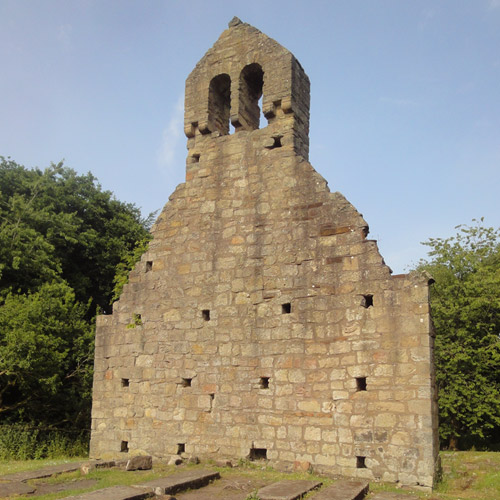Kinneil Estate Church
 This project helped create an attractive and educational visitor experience at this interesting historic site, as part of a walk around Kinneil Estate or along the long-distance footpath network. It has also safeguarded an important local heritage site.
This project helped create an attractive and educational visitor experience at this interesting historic site, as part of a walk around Kinneil Estate or along the long-distance footpath network. It has also safeguarded an important local heritage site.
The remains of the church building at Kinneil provides an unusual link between the distant past and the industrialisation of the Forth Valley in an evolving landscape. It stands on the Roman Wall because of its cross country links; was a Dark Age foundation with contacts across the Forth in Culross; was rebuilt in the medieval period by a feudal landowner; has a fine collection of colliers' gravestones; was used as billets by Hanoverian cavalry; saved as a seamark for ships in the Forth, and as a Romantic ruin in a design landscape.
In May and June 2014 Falkirk Community Trust worked with a group of local volunteers to carry out the majority of ground work at the site. The ivy was removed, and with a certain amount of detective work - including using old photographs, champhered margins to the stones and carefully removed loose soil to determine the footprints of the 'voids' from which they had been removed - the Keeper of Archaeology and Local History at FCT, Geoff Bailey, managed to reposition the stones ready for consolidation.
Specialist stone masons, Mossley (Scotland) Ltd undertook the consolidation of the low level walls using the traditional technique of lime mortar, and pointed some of the west gable. Surplus loose stones were then removed from the interior of the church walls and the stone paved floor of the nave was cleaned.
Volunteers then recorded the site. Among the discoveries were two 13/14th century grave markers, one carved with a calvary cross and the other with a sword. There were also seven early 17th century stones, many depicting hammers and picks, the trade emblems of masons and colliers, which were previously unrecorded.
The work was timetabled to coincide with an open day at Kinneil House, and over 100 visitors were directed to the church, where they were given a brief guided tour of the site. The project also hosted tours for the Edinburgh Archaeological Field Society and the Borders Group.
The site was covered in topsoil to protect the slabbed floor from the weather and potential vandalism.The plans and drawings have been digitised and a report prepared for the journal of the Falkirk Local History Society, Calatria. A complete history of the church has also been published, and an electronic copy can be downloaded below.

